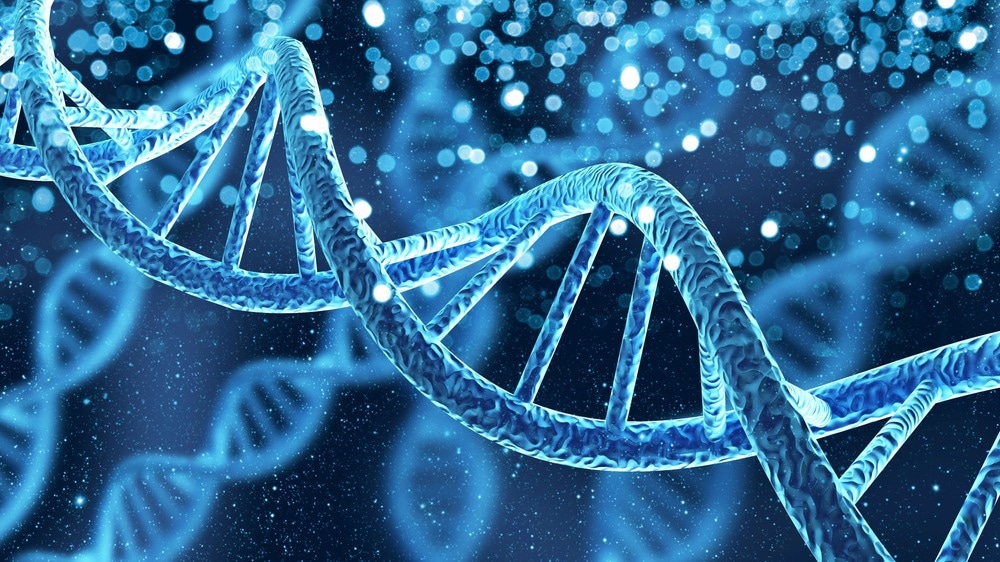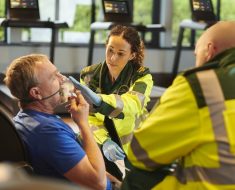In a recent study posted to the medRxiv* preprint server, researchers assessed whether loss-of-function (pLOF) variants of type I interferon (IFN) immunity genes are associated with life-threatening coronavirus disease 2019 (COVID-19).

Background
Critical COVID-19 may be caused by autosomal inborn defects of toll-like receptor 3 (TLR3)-dependent and -independent type I IFN immunity, such as autosomal recessive (AR) deficits of IFNAR1 or IRF7. Studies have discovered that patients younger than 60 years old were more likely to experience inborn errors of immunity (IEI). These results imply that type I IFNs are crucial for the respiratory tract's protective immunity against severe acute respiratory syndrome coronavirus 2 (SARS-CoV-2), with low type I IFN activity responsible for up to 15% to 20% of instances of life-threatening COVID-19. Despite this high percentage, in about 80% of instances, the causes of serious COVID-19 pneumonia are still unknown.
About the study
In the present study, researchers investigated the association between patients experiencing severe COVID-19 and pLOF variants of IFN type I immunity.
Through the COVID Human Genetic Effort (CHGE), the team recruited over 9,000 SARS-CoV-2-infected individuals having clinical symptoms. The team defined life-threatening COVID-19 cases as pneumonia patients who developed a severe illness or when the patient requires mechanical ventilation or high-flow oxygen, septic shock, or any other organ damage necessitating intensive care unit (ICU) admission. Plasma samples obtained from patients were examined for the existence of autoantibodies (auto-Abs) against type I IFNs.
SARS-CoV-2-infected people who were asymptomatic or paucisymptomatic and had mild and ambulatory sickness were included as controls. A positive polymerase chain reaction (PCR) test, a positive serological test, or the presence of characteristic symptoms like anosmia or ageusia following exposure to a confirmed SARS-CoV-2-infected patient determined the existence of infection. Whole-exome or whole-genome sequencing (WGS) was performed on cases and controls, and the sequencing data was used to identify high-quality variations.
Genetics & Genomics eBook

A genome-wide gene-based analysis of the burden of rare variants was performed. Three genetic models were employed to calculate a genetic score for each gene based on the genotypic data for putative rare variants: (1) Co-dominant: samples were coded 2 if at least one homozygous variant was present, 1 if at least one heterozygous variant was present, and 0 otherwise; (2) heterozygous: specimens were coded 1 if at least one heterozygous variant was present, and 0 otherwise; (3) recessive: samples were coded 1 if at least one homozygous variant was present, and 0 otherwise. With the Efficient and Parallelizable Association Container Toolbox (EPACTS), a logistic regression-based likelihood ratio test (LRT) was used to examine the relationship between the genetic score corresponding to each gene and the disease status.
Results
Through the CHGE, the team gathered whole-exome sequencing (WES) or WGS data for 1,573 people having moderate or asymptomatic disease, i.e., without pneumonia, and 3,503 patients having life-threatening COVID-19 pneumonia. With 34 carriers present in the patient group as compared to six among controls, the study confirmed the high enrichment in rare pLOF mutations at a total of 13 loci in patients suffering from serious COVID-19.
Furthermore, 31 of the 34 pLOF variant carriers were heterozygous, while three were homozygous: one each for an IRF7 frameshift variant, an IFNAR1 deletion across 4,394 base pairs, and an IFNAR1 deletion across 6,624 base pairs. Patients had all of the homozygous pLOF mutations. As a result, the odds ratio (OR) associated with homozygous carriers was higher than the heterozygous carriers.
Highly significant enrichment was discovered by analyzing the rare pLOF variations at 14 loci along with the biological LOF (bLOF) variants of TLR7. For homozygous/hemizygous carriers compared to heterozygous carriers, the effect was larger. Furthermore, heterozygous carriers were much older than homozygous/hemizygous carriers. Altogether, these findings showed that individuals with serious COVID-19 pneumonia had an enrichment in rare pLOF mutations at 15 loci that were involved in type I IFN immunity.
Overall, the study findings showed that along with X-linked TLR7 deficiency, rare autosomal inborn errors related to type I IFN-dependent immunity on influenza viruses can cause significant types of SARS-CoV-2 infections, especially in people under the age of 60. Future research should investigate young patients with critical COVID-19 who lack auto-Abs against type I IFNs to determine mutations with a strong tendency toward life-threatening COVID-19.
*Important notice
medRxiv publishes preliminary scientific reports that are not peer-reviewed and, therefore, should not be regarded as conclusive, guide clinical practice/health-related behavior, or treated as established information.
-
Rare predicted loss-of-function variants of type I IFN immunity genes are associated with critical COVID-19. Daniela Matuozzo, et al. medRxiv. doi: https://doi.org/10.1101/2022.10.22.22281221 https://www.medrxiv.org/content/10.1101/2022.10.22.22281221v1
Posted in: Medical Science News | Medical Research News | Disease/Infection News
Tags: Anosmia, Autoantibodies, Autosomal, Coronavirus, Coronavirus Disease COVID-19, covid-19, Exome Sequencing, Gene, Genes, Genetic, Genome, immunity, Influenza, Intensive Care, Interferon, Oxygen, Pneumonia, Polymerase, Polymerase Chain Reaction, Receptor, Research, Respiratory, SARS, SARS-CoV-2, Septic Shock, Serological Test, Severe Acute Respiratory, Severe Acute Respiratory Syndrome, Syndrome, X-linked

Written by
Bhavana Kunkalikar
Bhavana Kunkalikar is a medical writer based in Goa, India. Her academic background is in Pharmaceutical sciences and she holds a Bachelor's degree in Pharmacy. Her educational background allowed her to foster an interest in anatomical and physiological sciences. Her college project work based on ‘The manifestations and causes of sickle cell anemia’ formed the stepping stone to a life-long fascination with human pathophysiology.
Source: Read Full Article





